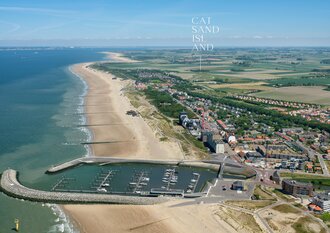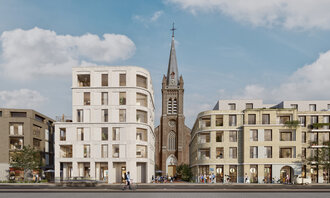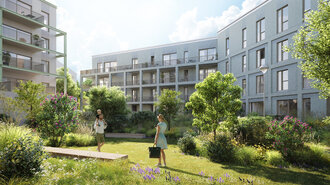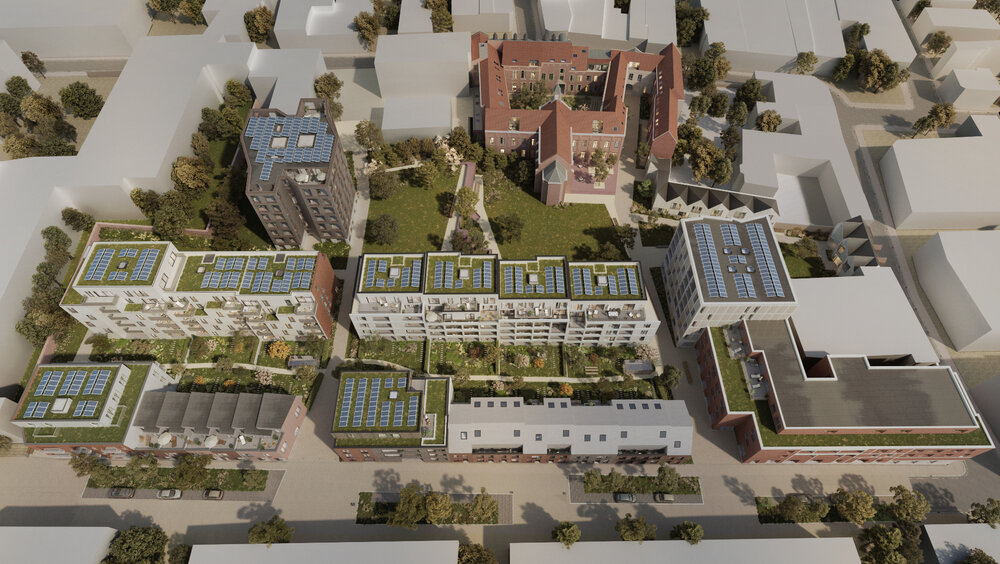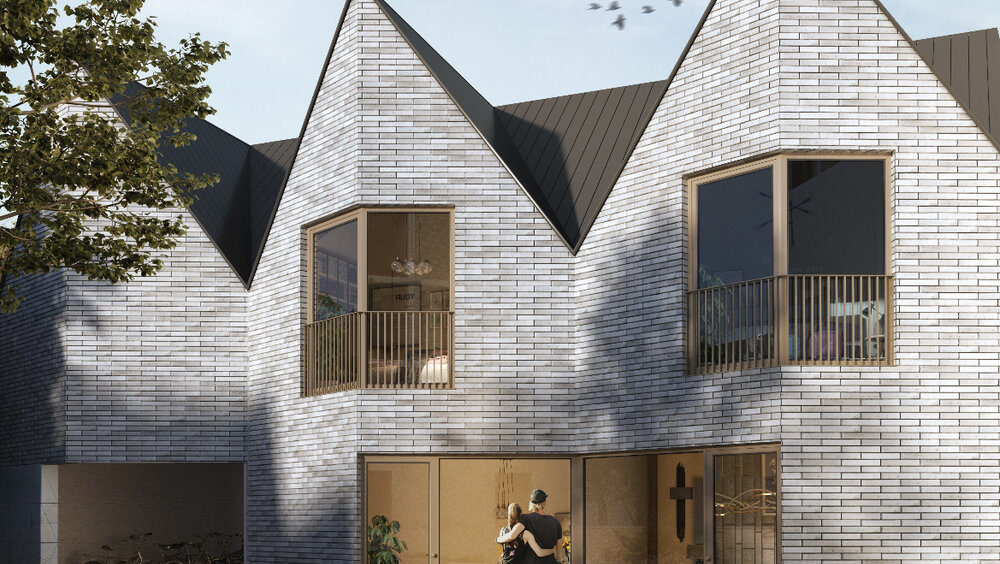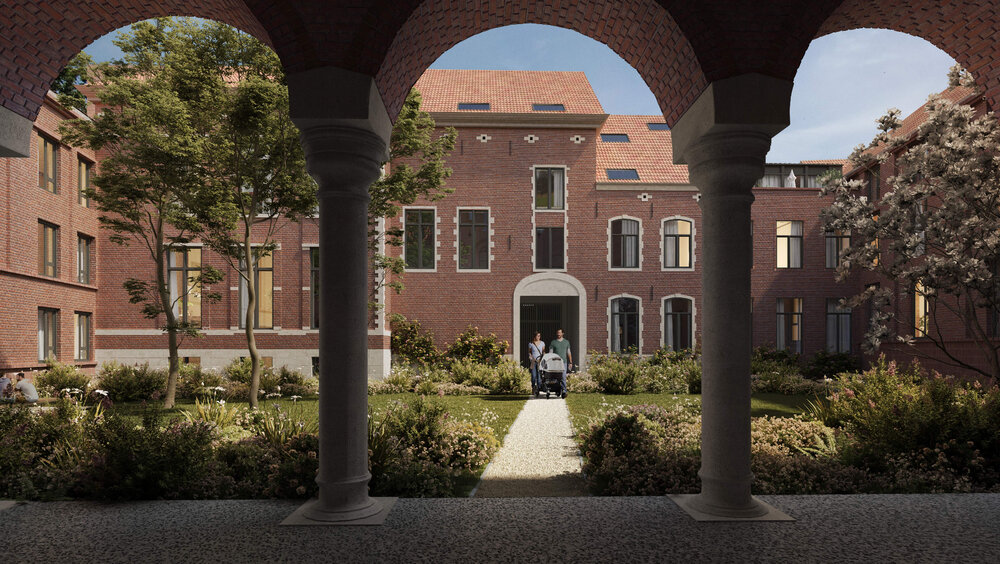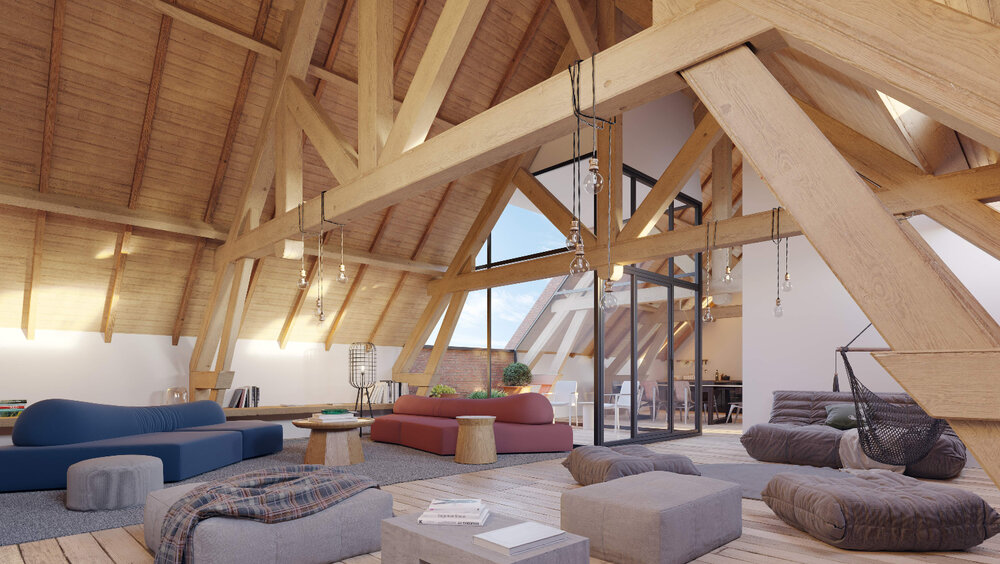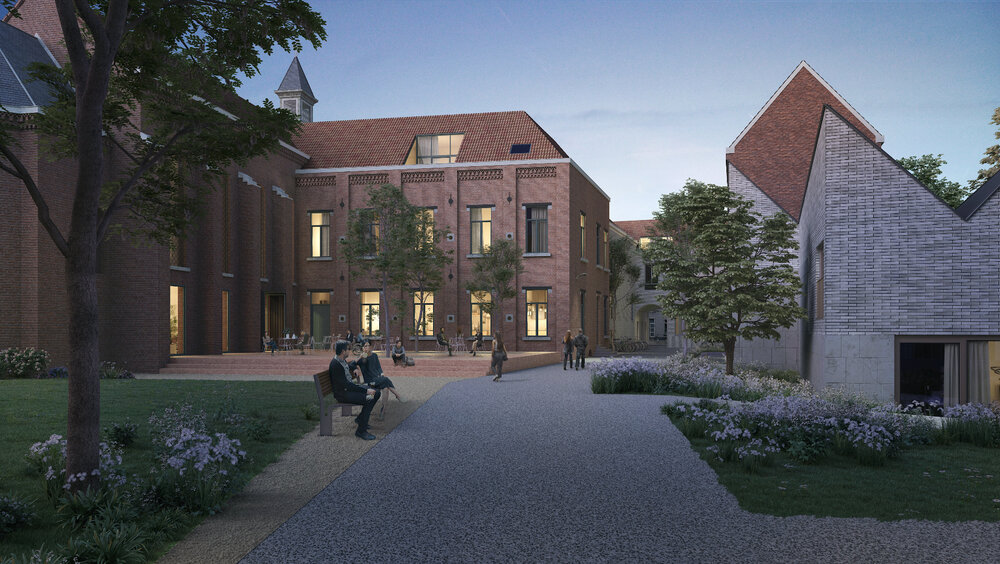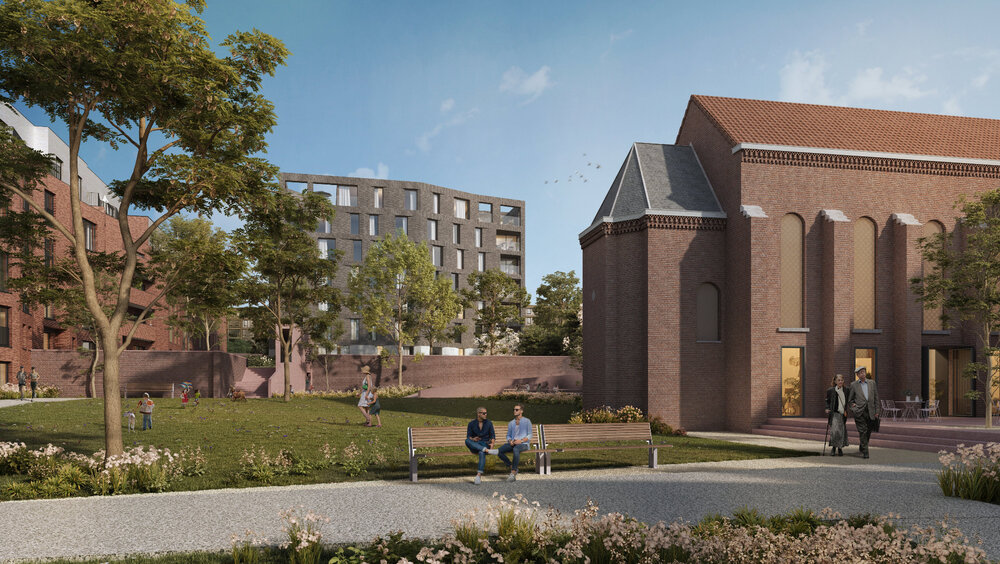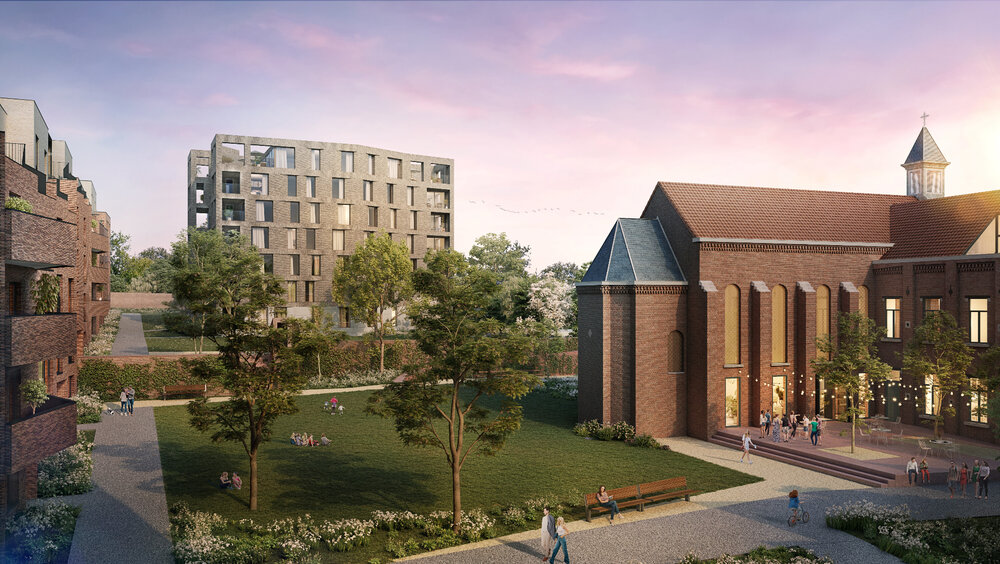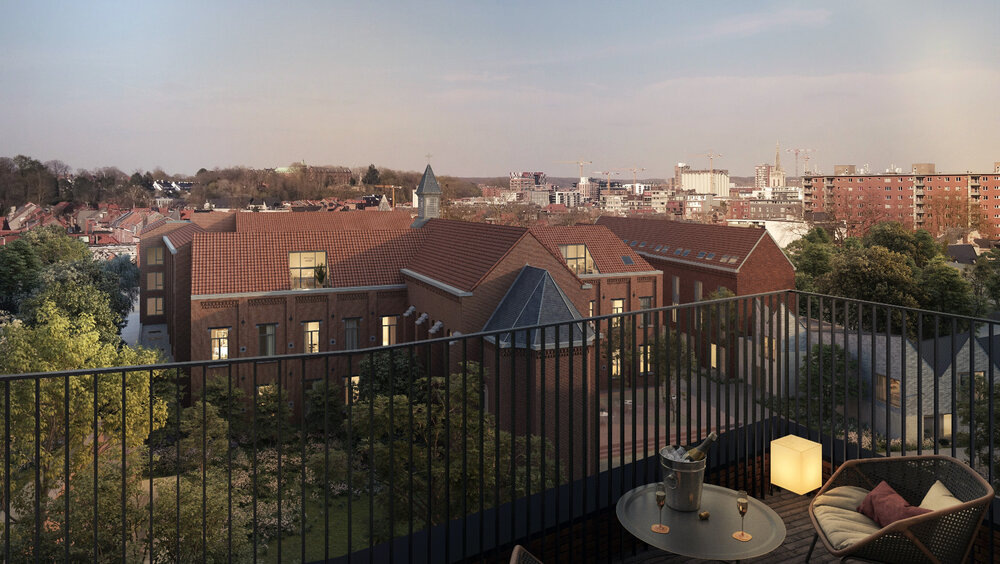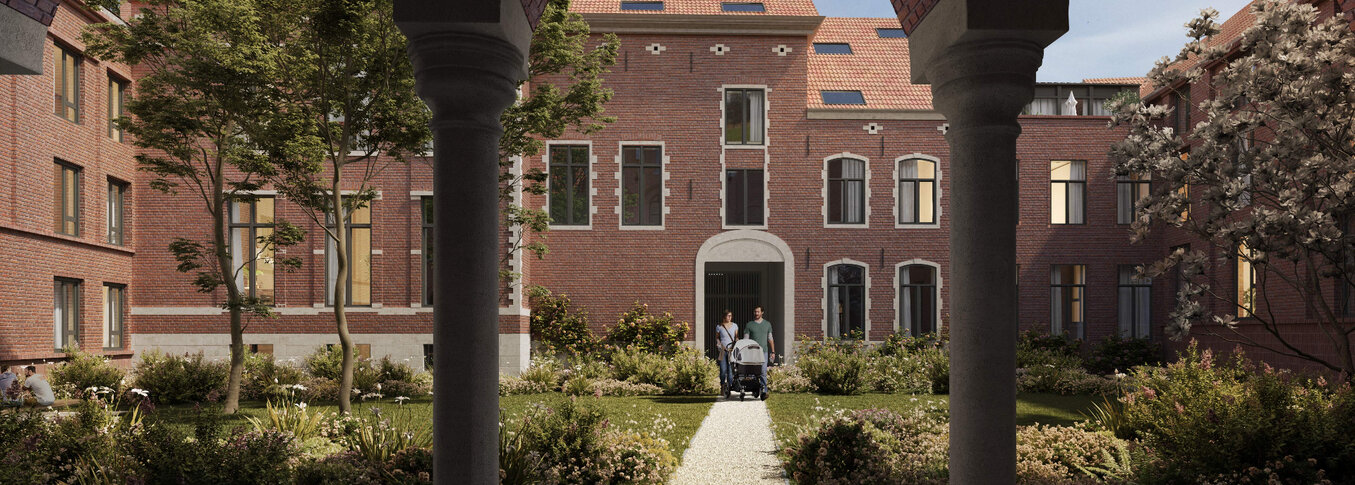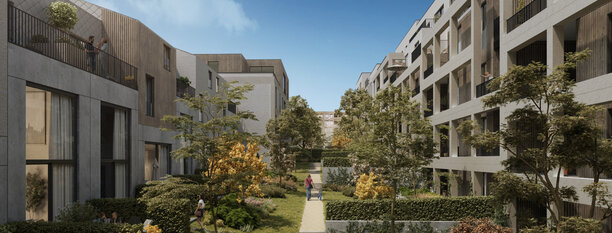
How does ION make Burenberg a sustainable project?
ION attaches great importance to sustainability and this is clearly reflected in each of our projects. A good example of sustainable building would be Burenberg in Leuven where an innovative heat network and smart water management go hand in hand with a green living environment.

Thanks to the use of heat pumps for heating and (passive) cooling, instead of traditional methods such as gas and air conditioning, Burenberg can reduce its ecological footprint by 80%. The use of solar panels also provides renewable, locally produced energy. The buildings are organised according to a stepped model that responds to the orientation of the area. As a result, the roof surface of each building is optimally exposed to the sun and the panels generate an optimal amount of environmentally friendly energy.
These interventions result in a project where almost all the homes meet the NZE standards. That stands for Nearly Zero Energy, a term used for homes that consume little energy for their heating, ventilation, cooling and hot water. They obtain their energy mainly from green energy sources.
In recent years, our country has been repeatedly ravaged by periods of prolonged drought. As a result, we came to realize that optimal water management was essential. Three elements are of paramount importance: recuperation, infiltration and green roofs. Burenberg is fully committed to maximum water recuperation, which reduces the consumption of fresh drinking water by up to 40%. In addition, we allow the excess rainwater to infiltrate as much as possible on our own site. Thanks to a well-thought-out design, in which the underground parking is situated as much as possible under the buildings, the rainwater can infiltrate unhindered into the gardens.
The extensive park garden, which provides the site with oxygen, plays a leading role here. This beating heart of Burenberg will become a real quiet area, where local residents are also welcome to escape the hustle and bustle of the city. For the residents of Burenberg, this beautiful green space will become the central meeting place.
Variety is key
In the park garden, biodiversity comes first. The grass zones are limited to the centrally located functional areas - the places where you can sit or have a picnic and where the children can play. At the edges, the emphasis is put on colourful flower meadows, flower borders, various indigenous trees, etc. The large lime tree at the monastery will be preserved, while new future trees will be planted. This variation in planting not only provides a beautiful view but it also offers a nice added value to the site.
Dynamic
The garden itself consists of two terraces, on different levels, which creates a pleasant dynamic. A central staircase connects the two parts and there is also a ramp. In this way, the terraces remain accessible for pedestrians and wheelchair users.
Green environment
Biodiversity is also the key word in the three large collective gardens, which are accessible to the residents of the adjacent buildings. The gardens are developed as edible gardens: lush green spaces, shrubs, trees and climbing plants, with an emphasis on varieties of edible fruits or leaves.
A different aspect, but as important as the others in terms of sustainability, is the sustainable renovation and integration of the existing heritage on the site. This is expressed in the redevelopment of the old monastery building and the former authentic chapel. These historic buildings will be qualitatively transformed with respect for the existing heritage values.
Another essential pillar of the sustainability story at Burenberg is mobility. The site will be completely traffic-free and we are therefore fully committed to the STOP principle, with a preference for walking, then cycling, public transport and finally private cars. Furthermore, user-friendly bicycle storage facilities will be provided throughout the site, for both residents and visitors, as well as charging points for electric bicycles and electric cars.
Sustainability is an important, but certainly not the only asset of the Burenberg project.
